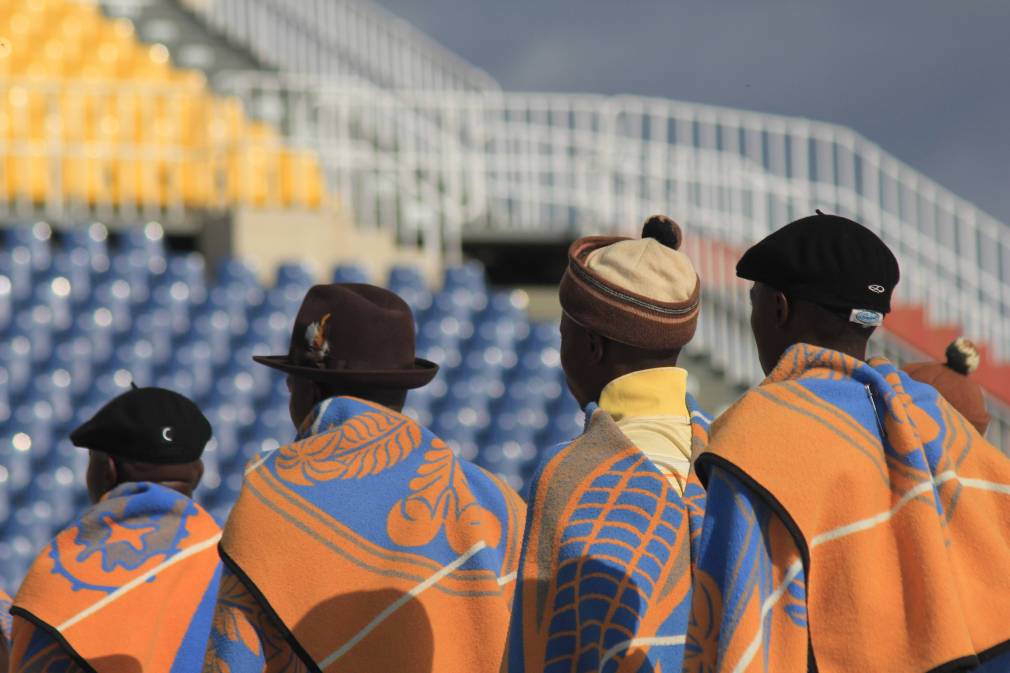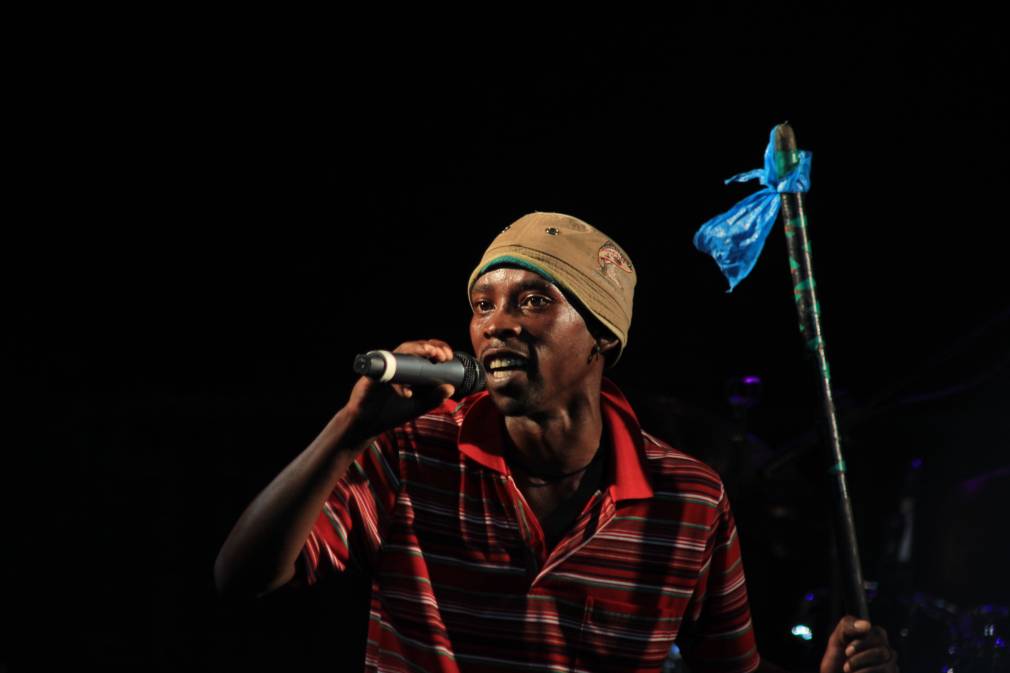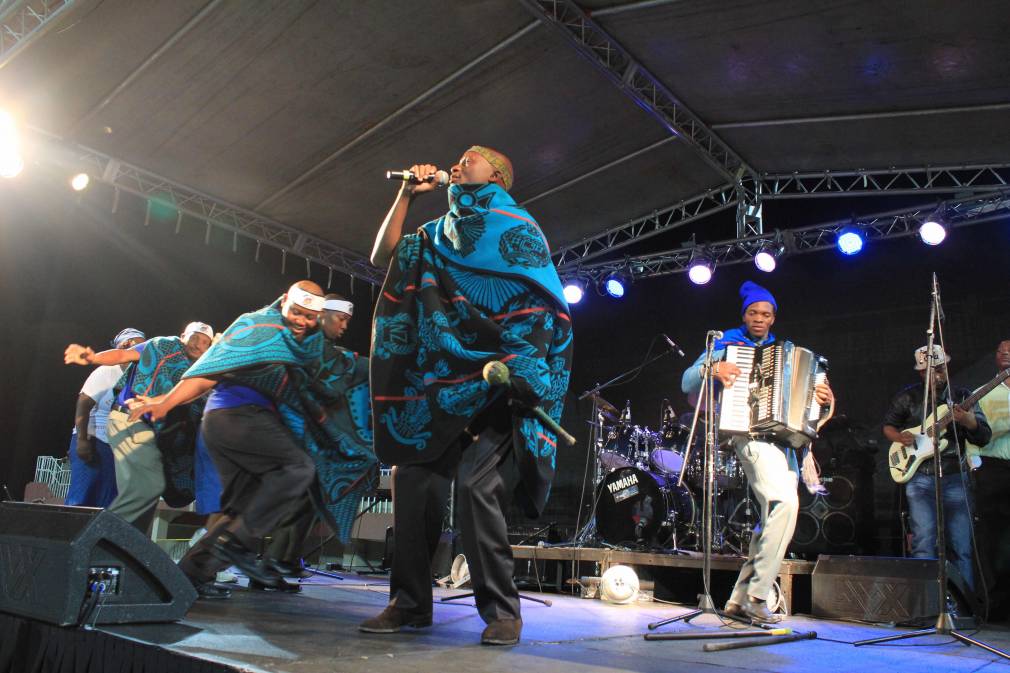For over a decade, local newspapers in Lesotho have carried recurring reports on the inter-camp warfare raging between various collectives in the country’s beloved accordion music genre. The damage has been colossal; young Basotho men and their entire families living in rural and peri-urban areas have been wiped out, and the bloody spree shows no signs of abating. Likhau, who was one of the brightest artists to have emerged of late, met his fate in 2019. His high profile murder was but one in a number of murders associated with the genre. It has become impossible to separate the violence from the music.
What the publications have consistently failed at doing is to contextualize the violence by situating it within the broader framework of Lesotho’s frail political landscape – police and soldiers have been reported to take sides, for example – and within the limits imposed on the labour force by the grim economic prospects which have been unfolding worldwide at different time periods since the fall of the current millennium, but specifically since the 2008 economic meltdown (and, now, the unprecedented losses at stake due to the Coronavirus epidemic).
A bit of background
Accordion music, colloquially known as Famo, has its roots in South African mines. As early as the 1920s, speakeasies used to have bands that would play the music to delight mineworkers, a great portion of whom were migrants from rural South Africa, from Lesotho, and from elsewhere in Southern Africa. These are the young and old men carried by “the train […] to come and work in the gold and mineral mines in Johannesburg and its surrounding metropoli,” in bra Hugh Masekela’s “Stimela”.
Running parallel to the evolution of the music was the evolution of gangs. While Nongoloza’s Ninevites are the most recognizable of the bunch, there isn’t much that has been said about the Ma-Russia of Lesotho. Reported to have formed initially as a protection scheme from bullying, the gang grew to associate with, among other things, embezzlement, trafficking, and the sale of liquor throughout the prohibition of liquor sales to black people (1897 – 1962). Similarities can be drawn between prohibition-era America, the rise of speakeasies, and the corresponding rise in popularity of what Gil-Scott Heron calls J(ive) Azz music.
The evolution of famo should also be thought about in community with other music forms of the time, such as Marabi and Mbaqanga. The conditions were similar. Black people were oppressed, and we needed an outlet for our frustrations.
How the French accordion entered the music remains unclear (the organ had been used before this), but the colonial import came to define the sound for decades to come. The music was being made by miners, meaning that a respectable portion of the groups they formed consisted of Ma-Russia affiliates. And with that, came the violence.

The evolution
Tau ea Matšekha, who emerged in the early 1970s, were the first group to break out from the mines into national consciousness. Buoyed by the power wielded by ‘tribe’-specific radio stations (Radio Bantu, the latter-day Sesotho language broadcaster Lesedi FM, in this instance); record companies, of which Gallo Record Company was at the forefront; and a receptive, engaged audience back home in Lesotho, their popularity soared. The group’s music took off, spread like wildfire, and planted many a seed before Forere Motloheloa and Apollo Ntabanyane went on to pursue successful solo careers. Forere’s opening riff is what we hear when listening to Paul Simon’s “Boy in the Bubble”, a song which has been re-worked by the likes of Patti Smith and Peter Gabriel. The same riff can be heard on Tau ea Matšekha’s “Ke Ikhethetse e Motle“.
When I was growing up in the 90s, famo songs came to be known as Lipina tsa Litsamaea-naha (migrant songs). They would get played on high volume by Ma-Weekente, the mineworkers who’d visit their families during weekends only to return to the mill when the clock struck 8am on a Monday. These traveller’s songs were filled with topics about adventure, with scene-setting instrumentation and harmonic accompaniment to boot.
Styles of the music include Masholu, essentially lyrical warfare set to music, like one would in a rap battle; and Mekorotlo, hymns which place emphasis on the chorus, with a short verse from the lead vocalist towards the end of the song.
The nineties also witnessed a wave of new entrants who mixed with the old guard to further shake up the style of the music. Notable names from that era are greats such as Manka le Phallang, Mahosana a ka Phamong, Puseletso Seema and Mantša, who remains an influential figure from whom many greats – Famole, Kholumo, Selomo, etc. – have come forth over the years. However, the record labels who were signing most of these acts offered murky contracts. Said Mahase of Mahosana aka Phamong about dealing with EMI when I interviewed him: “We used to send demos to Johannesburg. The first one we sent in 1984 failed, but the one we sent in 1985 got accepted.” He went on to inform me that he got paid peanuts as a session musician at Johannesburg’s Downtown Studios. Most of the musicians who were well-known during his day have yet to see royalties from their labour.

Violent clashes, and attempts at curbing them
Very little has been written about accordion music in general. The best sources are the musicians themselves, along with the interviews they grant to radio stations such as Radio Lesotho and Lesedi FM (South Africa). This poses a problem in that the narrative of a violence-ridden scene has taken centre stage, and in turn clouded other aspects of the genre: Like the excellent compositions; or the fashionable dress sense; or the dancing troupes’ fluid bodily movements; or how, through time, the music has acted as a record for Lesotho’s history — from how society operates, to how malice and petty party politics have shifted the fabric of Basotho life.
Yet, for the record, it’s important to touch on the violence. When I called to interview him about his storied presence on the scene, Mants’a Mohale said: “I do not know whether you have been sent to kill me, so I can’t continue with this call.”
That was but a tiny peek into the paranoia that criminal elements in the music have enabled. In some villages, people can’t wear blankets for fear of wearing the wrong faction’s colours in rival territory. The foremost factions associated with these murderous sprees are Seakhi, led by Bereng Majoro (alias Lekase), and Terene, led by Mokete Chakela.
In 2020, accordion music remains as potent as ever, with a variety of styles to boot. Sonically, parallels can be drawn to the Funana music of Cape Verde, and the Maskandi music of Kwa-Zulu Natal. The playlist below compresses time by it covers various styles of playing the music, from different eras, and in different regions in Lesotho.
Further reading:
